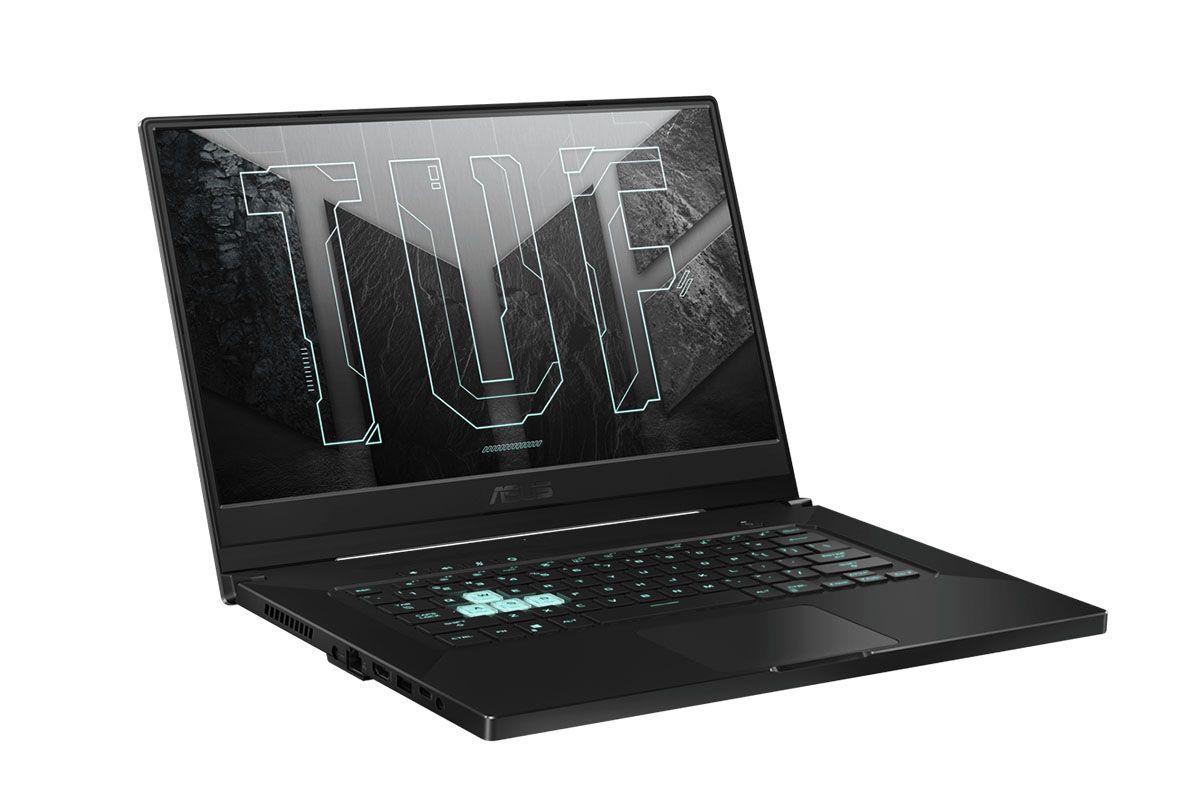If you fancy yourself some gaming hardware, now is probably the best time to get some, thanks to a slew of launches in recent months. From the new Xbox Series X|S and Sony PlayStation 5 consoles, to NVIDIA and AMD’s new graphics cards under the RTX 30-series and Radeon 6000 series, respectively, the choices seem endless. However, we are facing a global chip shortage and the demand has never been greater, especially if you are a PC gamer. New GPUs are either out of stock, or are being scalped and sold at ridiculously high prices.
Probably the best way to get your hands on the new and improved hardware is by either going for a fully built system or investing in one of the newly launched gaming laptops. If you’re leaning towards the more portable route, we have listed some of the top gaming notebooks on the market right now. Check out all of our recommendations!
ASUS ROG Zephyrus G14

Rated as one of the best gaming laptops in 2020, ASUS did a commendable job with the ROG Zephyrus G14, a 14-inch compact, fairly lightweight gaming notebook that featured powerful CPU options from AMD along with entry-to-mid range GPUs from NVIDIA. It also came with a unique design, especially the perforations on the lid featuring customizable LEDs, which the company calls AniMe Matrix mini-LED display.
This year, the laptop has been upgraded to the new AMD Ryzen 5000 CPUs and the option of up to an RTX 3060 from NVIDIA. It also offers a 1080p 144Hz refresh rate panel, and a higher 1440p 165Hz refresh rate option. On top of that, the laptop should offer you up to 12-13 hours of battery life, as claimed by ASUS.
- The updated ROG Zephyrus G14 comes with the same design as last year but with updated AMD Ryzen 5000 series CPU and NVIDIA's new GeForce RTX 3060 GPU.
Alienware Area 51m

This power-packed laptop can replace your gaming desktop as it comes loaded with a desktop-grade CPU and GPU. The Alienware Area 51m is an ambitious machine from the company and is one of the only laptops on the market that lets you swap the storage, RAM, and even the processor and GPU using custom modules available exclusively from the company.
It doesn’t come cheap though, and since it is loaded with high-end hardware, it isn’t as portable as most gaming laptops out there. The latest model offers the option of up to a 10th-gen Intel Core i9-10900K, NVIDIA’s GeForce RTX 2080 Super, and a 17.3-inch 300Hz refresh display 100% sRGB color gamut.
- This behemoth of a laptop has the power of a desktop PC as it packs a full-fledged Intel Core i9-10900K and an NVIDIA GeForce RTX 2080 Super.
MSI G66 Stealth

The newly updated MSI GS66 Stealth continues to feature a sleek and understated design that measures 20mm in thickness at its highest point. Yet, it can cram up to a 10th-gen Intel Core i9-10980HK processor with the new NVIDIA GeForce RTX 3080 graphics card. It also comes with up to a 300Hz full-HD display for your fast-paced FPS games.
The stealthy design makes it a great companion at the office and at the same time, it can eat AAA-game titles for breakfast. The laptop also offers a per-key RGB keyboard from Steelseries and a massive 99.9Whr battery, which is one of the largest we have seen on a laptop.
- One of the slimmest gaming notebooks out there, the GS66 stealth has been upgraded with more powerful graphics performance thanks to the new NVIDIA RTX 30-series mobile GPUs and up to a 10th-gen Intel Core i9 processor.
ASUS ROG Zephyrus G15

There is a reason why we have picked this as the best gaming laptop in our list of top laptops for 2021. Building on the foundations of the ROG Zephyrus G14, ASUS introduced a larger 15-inch version this year. It has the same design as the 14-inch version, sans the mini-LEDs inside the 8,279 perforations on the lid. Instead, ASUS is offering a metallic finish that makes the pattern shine. It looks really classy, and while it doesn’t scream out as a gaming notebook with fancy RGB lighting, it definitely has the power to drive the most demanding games.
You can pack it with up to an AMD Ryzen 9 5900HS processor and NVIDIA’s GeForce RTX 3080 mobile GPU. You also get a WQHD (2560 x 1440-pixels) 165Hz refresh rate display with 100% DCI-P3, Adaptive-Sync, and is Pantone Validated. Do note, just like the smaller model, this one doesn’t have a webcam either.
- An all-rounder when it comes to high-end gaming and productivity, the Zephyrus G15 is our choice for the best gaming laptop.
ASUS TUF Dash F15

Yes, another ASUS gaming laptop, but we have our reasons for choosing this one. First of all, this is one of the only gaming laptops that comes with the newly announced Intel 11th-gen processor made for thin and light gaming notebooks. It is also one of the more affordable options featuring the latest RTX 3060 and RTX 3070 GPUs from NVIDIA. The new TUF Dash F15 is unlike any of the laptops that we have seen in the past under this series. It takes a lot of design cues from the Zephyrus lineup and is slim, measuring just under 20mm and weighing at 2kgs.
To top it off, the laptop comes with Thunderbolt 4, and a large battery that is said to last over 10 hours. We are in the process of testing this notebook and as far as early impressions are concerned, it is a very solid mid-range gaming laptop, and probably the best that you can get for under $1,500.
- ASUS has a new mid-range champ with the TUF Dash F15. It packs the new 11th-gen Intel H35 Tiger Lake processor and up to an RTX 3070 GPU from NVIDIA along with a great battery life.
Razer Blade Stealth 13

The Razer Blade Stealth 13 is the best 13-inch gaming laptop. While it will soon be replaced by the new ASUS ROG Flow X13, it still has some time to retain the crown before ASUS actually starts selling its new laptop. Having a sleek yet sturdy design, it comes with a fairly modest NVIDIA GeForce GTX 1650 Ti GPU, which isn’t groundbreaking, but at just 15.2-mm thickness you can’t really ask a lot.
It has been updated with the new Intel 11th-gen Core i7-1065G7 CPU and features Thunderbolt 4 as well, while display options include a 1080p 120Hz panel or an OLED panel with standard 60Hz.
- Tiny yet powerful, the Razer Blade Stealth 13 is the ultimate ultrabook that can offer an excellent performance package for casual or e-sports gaming enthusiast.
Lenovo Legion 5

As my colleague Pranob mentions in his best cheap gaming laptops list, the Legion 5 should be your top pick if you are looking for a gaming laptop on a budget. It comes with AMD’s Ryzen 7 4800H processor, along with NVIDIA’s GeForce GTX 1660 Ti graphics card, 16GB of DDR4 RAM, and a 512GB M.2 NVMe SSD. It doesn’t have a premium build, but you do get RGB lighting on the keyboard, which in fact comes with a similar layout as some of the ThinkPad notebooks.
The GPU on this machine should be excellent for e-sports titles while some of the older AAA titles should be able to sustain 60 frames per second with all graphics settings maxed out. Notably, this laptop also comes with a respectable 80Whr battery, so expect it to last long when you are doing other tasks like web browsing or watching movies.
- A highly recommended gaming laptop if you are looking for the best performance at $1,000.
These are currently the best gaming laptops on the market today in our opinion. But there are always more options coming through the months, so make sure you visit this list as we will be updating it every month. Gaming laptops are becoming more powerful and at the same time getting slimmer with longer battery life. An interesting thing to note is that AMD seems to be taking over Intel and a majority of new gaming laptops are adopting the new Ryzen 5000 series mobile CPUs with the new Zen 3 architecture.
Speaking of which, make sure you check out our list of the best AMD Ryzen-powered laptops. Apart from new processors and GPUs, we are also expecting more laptops to come with faster 5G mobile connectivity this year. We have also curated a list of the best 5G laptops that you can check out too.
The post Best gaming laptops of 2021: ASUS ROG, Alienware, MSI and more appeared first on xda-developers.
from xda-developers https://ift.tt/3cAHFpK
via IFTTT























 To clarify, in this UI the profile picture of the logged in user is automatically loaded as an avatar for all fake users within it.
To clarify, in this UI the profile picture of the logged in user is automatically loaded as an avatar for all fake users within it.





